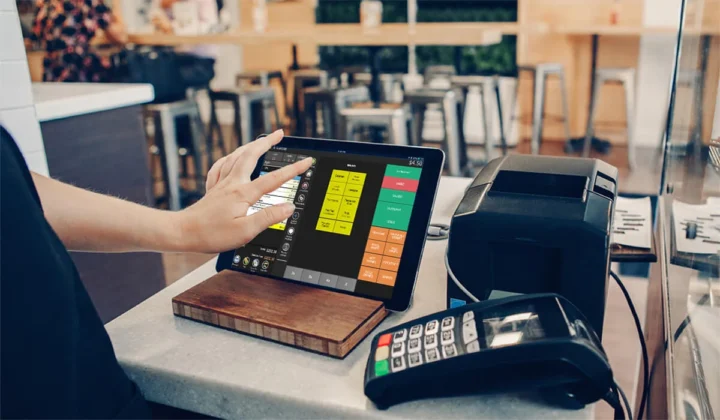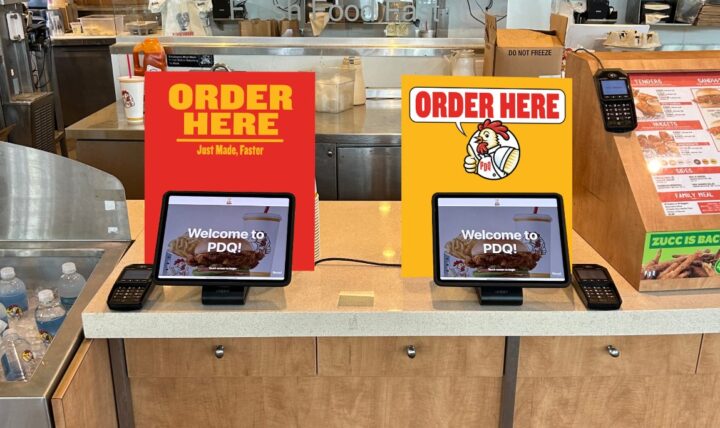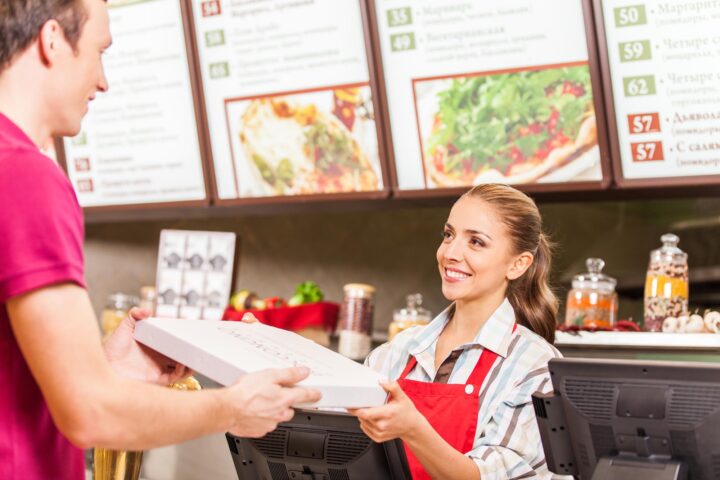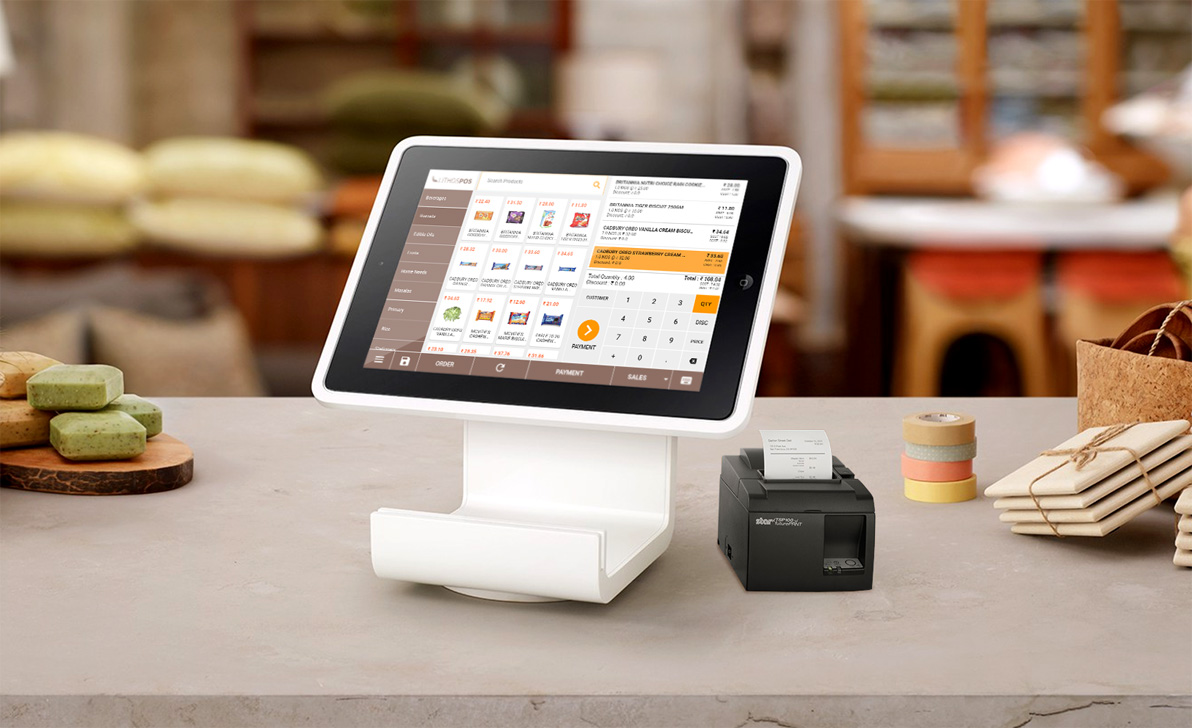In the fast-paced environment of quick service restaurants (QSRs), the right Point of Sale (POS) system isn’t just a business tool—it’s the backbone of daily operations.
This post delves into the best systems specifically designed for QSRs, breaking down their features, usability, and how they help streamline operations to enhance customer satisfaction and maximize efficiency.
Whether you’re opening a new restaurant or looking to upgrade your current system, this comprehensive guide is tailored to help you make an informed decision.
Choosing the Right POS System

Selecting a POS system for a quick service restaurant involves considering several critical features that accommodate high-speed service and multi-functionality. The ideal POS system should handle high transaction volumes with ease, support rapid order processing, and integrate seamlessly with other tools like kitchen display systems and inventory management.
Firstly, speed is paramount in a QSR setting. The POS system must minimize customer wait times by ensuring that transactions are processed swiftly. This involves not only hardware capabilities but also software efficiency.
Secondly, the system’s ability to integrate with other technologies—such as mobile ordering, online transactions, and loyalty programs—is crucial. These integrations help streamline operations and improve the overall customer experience, making them indispensable in modern QSR operations.
In the high-stakes environment of quick-service restaurants, the ease of use of a POS system is critical. Employees must be able to learn the system quickly and execute functions with minimal error.
This is where user-friendly interfaces and intuitive navigation become essential features. These elements can significantly impact training times and ensure accuracy in the fast-paced restaurant environment, essential for maintaining service quality and speed.
Moreover, considering payment processing solutions like Piggy Bank Processing, which can be integrated with various POS systems, enhances the efficiency and security of transactions. Piggy Bank Processing offers seamless payment solutions tailored to the needs of quick-service restaurants, ensuring that payment transactions are handled swiftly and securely. This integration not only simplifies the transaction process but also provides peace of mind for both customers and staff, knowing that payment data is managed safely.
Top POS Systems for QSRs

When it comes to selecting it for your quick service restaurant, there are a few standout options that are celebrated for their robustness, user-friendliness, and comprehensive features tailored to the fast-paced nature of QSRs.
- Toast POS stands out for its Android-based system, which is known for its speed and reliability. It offers extensive menu customization options, which is a boon for restaurants that frequently update their offerings.
- Square for Restaurants is another top contender, renowned for its sleek interface and versatility across various hardware options. Its strong suit is its excellent inventory management and real-time sales analytics, which are invaluable for high-volume establishments.
- Clover is another popular choice, known for its all-in-one hardware and scalable software options. It supports a range of apps directly integrated into the POS system, allowing for a highly customizable setup that can grow with your business.
These systems not only meet the basic requirements of speed and efficiency but also offer extensive support and scalability to accommodate the growth and varying needs of quick service restaurants.
Deep Dive into Specific POS Features

In the world of quick service restaurants, the integration capabilities can determine its success or failure. A well-integrated system can effortlessly connect with online ordering platforms, third-party delivery services, and other operational tools such as inventory management and employee scheduling.
This connectivity ensures that all parts of the restaurant’s operations are synchronized, reducing the risk of errors and improving the efficiency of service.
For instance, integration with online ordering platforms allows for automatic order input into the kitchen display system without manual intervention, speeding up the preparation process and reducing wait times.
Similarly, linking it to inventory management software can help track ingredient usage and alert managers when supplies need to be reordered, ensuring that the restaurant can always meet customer demand without overstocking or wastage.
Furthermore, the ability to integrate with CRM systems can help personalize the customer experience by retaining customer preferences and order history, which is beneficial for loyalty programs and targeted marketing. The capability to integrate with a wide array of operational tools not only enhances operational efficiency but also significantly improves customer satisfaction.
Advanced Reporting and Analytics
The power of data cannot be underestimated in the management of quick service restaurants. Advanced reporting and analytics capabilities can provide deep insights into business performance, customer behaviors, and operational efficiencies. These insights are crucial for making informed decisions that drive business growth and improve profitability.
Effective systems offer comprehensive analytics on sales trends, peak operational hours, and customer preferences, among other metrics. These data points allow restaurant managers to optimize menu items, adjust staffing levels during peak times, and tailor marketing strategies to better meet the needs of their target audience.
Enhancing Customer Experience with Modern POS Features

In the realm of quick service restaurants, the customer experience can be greatly enhanced by the modern features offered by advanced POS systems. Features like self-service kiosks and customer-facing displays not only streamline the ordering process but also empower customers by giving them direct control over their orders.
This transparency helps reduce order errors and speeds up the transaction time, which is crucial during busy hours.
Self-service kiosks have become a popular feature in many quick service restaurants because they allow customers to customize their orders without feeling rushed, ensuring accuracy and satisfaction.
Additionally, these kiosks can display upsell opportunities and promotions to customers at the point of order, which can increase average ticket sizes and boost sales. By integrating these customer-facing technologies, restaurants can provide a more engaging and efficient service experience that meets the expectations of today’s tech-savvy consumers.
Conclusion
Choosing the right system for your quick-service restaurant is a decision that significantly impacts the efficiency of your operations and the satisfaction of your customers.
By prioritizing features like integration capabilities, ease of use, and advanced analytics, you can select a system that not only meets the fast-paced demands of a QSR but also enhances your service delivery.
Whether you opt for industry leaders like Toast, Square, or Clover, ensure that your choice aligns with your specific operational needs and long-term business objectives. With the right technology in place, your restaurant can achieve streamlined operations, improved customer interactions, and ultimately, greater success in the competitive food service landscape.

